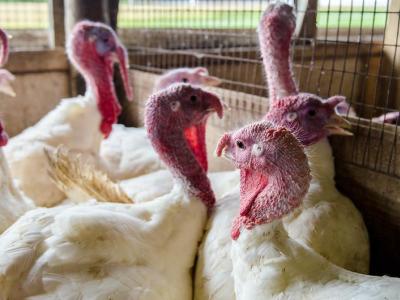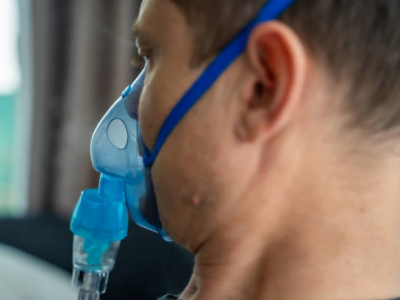Egypt sees second H5N1 death of 2015
A 65-year-old woman from the city of Asyut in central Egypt has died as a result of complications from H5N1 avian flu, according to a report today from Egypt's news agency Al-Ahram. She is the country's second H5N1-related fatality this year.
Egypt's Ministry of Health and Population announced the woman's death today and also reported that a 3-year-old boy from the northern town of Beheira has recovered from H5N1.
H5N1 cases in Egypt have increased sharply over recent weeks, and the country has reported 12 avian flu cases this year. In addition to the deaths, three people have recovered and seven cases are still active, the story said.
The World Health Organization (WHO) attributes the recent increase in H5N1 human cases in Egypt to a rise in outbreaks of the virus among poultry. Since 2003, Egypt has seen 203 cases of H5N1 avian flu and 72 deaths, according to WHO data as of Jan 6.
Jan 14 Al-Ahram story
Related Jan 13 CIDRAP News story
Jan 6 WHO global H5N1 case count
China reports 2 additional H7N9 cases
The number of cases of H7N9 avian flu in southern China's Guangdong province continues to rise, with two new infections reported today by Hong Kong's Centre for Health Protection (CHP).
The two cases involve a 52-year-old woman and a 37-year-old man, both from the city of Dongguan. Both people were diagnosed as having H7N9 yesterday, the CHP said, bringing to nine the total cases in Guangdong this year.
The woman has a history of pulmonary tuberculosis and is hospitalized in critical condition, and the man has a history of hypertension and is hospitalized in serious condition, according to a translated provincial ministry report posted today on FluTrackers, an infectious disease message board.
The CHP also officially announced today 14 other H7N9 cases that had been reported by Chinese provincial authorities and had previously been documented by FluTrackers. The report includes 5 cases from Fujian province, 4 each from Jiangsu and Zhejiang, and 1 from Xinjiang Uyghur Autonomous Region. The group comprises 7 men and 7 women, all between the ages of 20 and 83. Three of the 14 have died, and the remaining 11 are in critical condition, the CHP said.
The two new Guangdong cases bring the Chinese H7N9 confirmed case total to 493 since 2013, according to a case list compiled by FluTrackers.
Jan 14 CHP update
Jan 14 FluTrackers post
FluTrackers H7N9 case list
Jan 13 CIDRAP News scan on H7N9 in China
Utah finds H5N8 in wild duck; more outbreaks reported in Asia
Utah has become the third western US state to find an H5N8 avian influenza virus in a wild bird, with its discovery in an American widgeon duck, the Utah Department of Agriculture and Food (UDAF) reported in a press release yesterday.
The bird was found in Davis County in north-central Utah, the UDAF said. The virus's presence was confirmed by the US Department of Agriculture's National Veterinary Services Laboratory on Jan 9.
Utah officials said several other wild birds taken by hunters near the Great Salt Lake in Davis County are also being tested.
The find follows the detection of H5N8 in a gadwall duck in northern California last week and in a captive gyrfalcon in northwestern Washington state in mid-December. H5N8 outbreaks in farm poultry have been reported recently in Europe and Asia, but not in North America.
Utah's acting state veterinarian, Warren Hess, DVM, said the H5N8 detection is not unexpected, since Utah sits on a major migratory bird flyway. "The possibility of the disease being transmitted to domestic backyard bird flocks remains high, and we advise bird owners to take extra biosecurity measures to protect their flocks," he added.
No human cases of H5N8 have been reported anywhere, but Utah officials said hunters should take precautions when handling wild game.
Jan 13 UDAF press release
Meanwhile, avian flu outbreaks caused by H5 viruses have been reported on two poultry farms in South Korea, at Busan and Anesong, according to a story from the Yonhap news agency today. It said tests to determine if the viruses are H5N8 were pending.
Jan 14 Yonhap story
In addition, H5N8 outbreaks have hit three more goose farms in Taiwan, according to a Jan 12 story from Taiwan's Central News Agency (CNA). It said the farms are in Chiayi County, the site of an outbreak reported Jan 11 that killed 3,683 of 5,200 breeding geese. Taiwan officials said that event was Taiwan's first H5N8 outbreak.
Taiwan also has been battling H5N2 outbreaks in poultry.
Jan 12 CNA story










